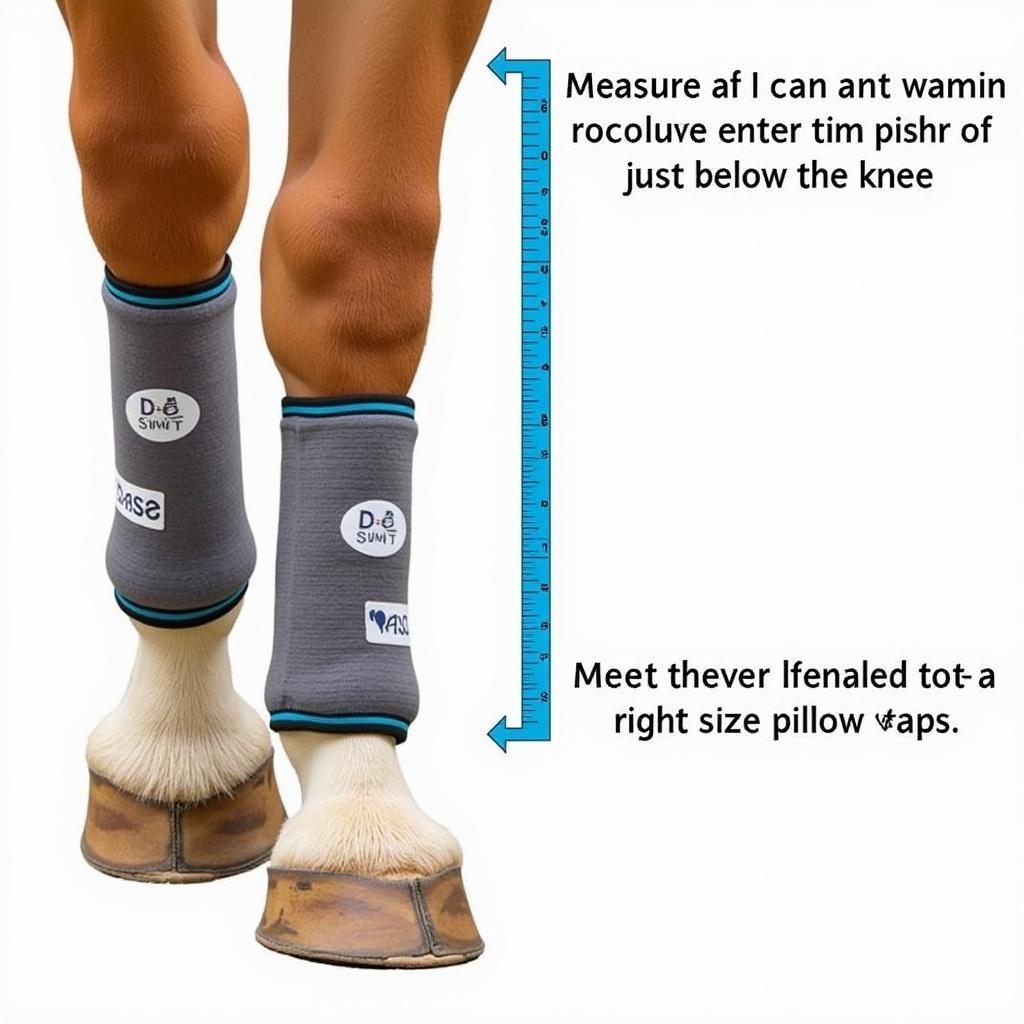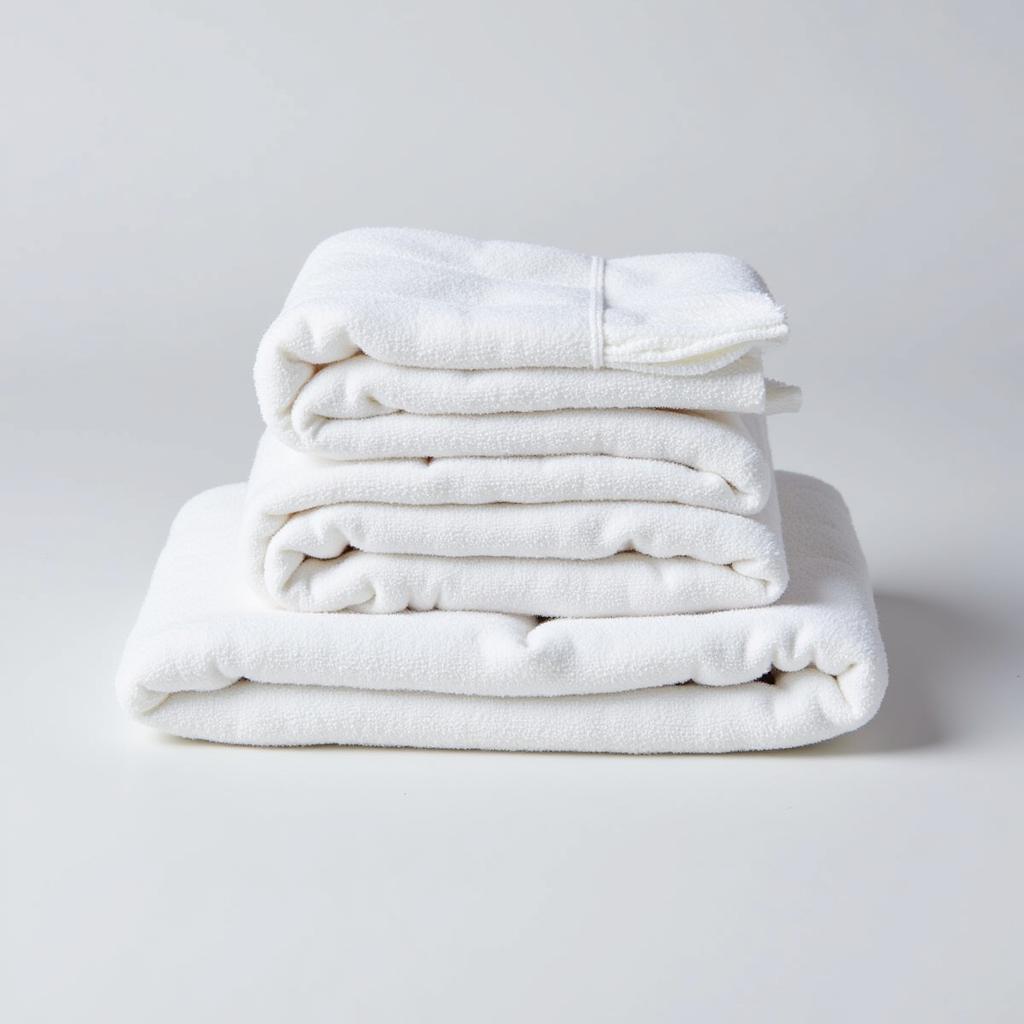Pillow wraps for horses are essential for protecting and supporting your horse’s legs, offering a cushioned layer of comfort and security during transport, stall rest, or recovery from injury. Understanding their purpose, proper application, and maintenance is crucial for ensuring your horse’s well-being.
Understanding the Need for Pillow Wraps
Equine leg care is paramount for any horse owner. Whether you’re a seasoned competitor or a recreational rider, protecting your horse’s delicate leg structures is vital. Pillow wraps offer an additional layer of padding and support, mitigating the risk of bumps, scrapes, and other injuries, especially during transport or confinement. They can also provide therapeutic benefits by offering compression and support to injured or inflamed areas.
Many situations warrant the use of pillow wraps. Transporting horses, especially over long distances, can expose their legs to potential harm. During stall rest, pillow wraps can prevent injuries from kicking or rubbing against stall walls. Post-surgical or injury recovery often necessitates the use of pillow wraps to provide support and reduce swelling.
Choosing the Right Pillow Wraps for Your Horse
Not all pillow wraps are created equal. When selecting pillow wraps, consider the materials, size, and closure system. High-quality materials like horse print fleece material offer breathability and cushioning. Correct sizing is crucial to ensure a snug fit without restricting circulation. Secure closures, like wide Velcro straps, ensure the wraps stay in place without shifting or becoming loose.
Material Matters
Opt for durable, breathable fabrics that offer excellent padding. Materials like quilted cotton or fleece provide cushioning while allowing air circulation, preventing overheating and moisture buildup.
Sizing Up Your Horse
Measure your horse’s cannon bone to determine the appropriate size. Wraps that are too small can restrict blood flow, while wraps that are too large can slip and become ineffective.
 Measuring a horse's leg for pillow wraps
Measuring a horse's leg for pillow wraps
How to Apply Pillow Wraps Correctly
Proper application is key to ensuring the effectiveness and safety of pillow wraps. Applying them too tightly can restrict circulation, while loose wraps can slip and become a hazard.
- Start with clean, dry legs.
- Position the wrap around the cannon bone area, ensuring even padding.
- Fasten the closures securely, ensuring a snug but not constricting fit.
- Check regularly for any signs of slippage or discomfort.
Avoiding Common Mistakes
- Wrapping too tightly: This can impede blood flow and cause discomfort.
- Uneven padding: This can create pressure points and lead to irritation.
- Ignoring signs of discomfort: Regularly check for swelling, heat, or any signs of rubbing.
Caring for Your Pillow Wraps
Maintaining the cleanliness of your pillow wraps is essential for preventing infections and ensuring their longevity. Regularly wash your pillow wraps according to the manufacturer’s instructions. Allow them to air dry completely before storing them in a clean, dry place.
 Washing horse pillow wraps
Washing horse pillow wraps
“Cleanliness is paramount when it comes to horse leg care,” emphasizes Dr. Amelia Shepherd, a renowned equine veterinarian. “Regularly washing pillow wraps helps prevent the buildup of dirt, bacteria, and sweat, reducing the risk of skin irritations and infections.”
Pillow Wraps: A Valuable Addition to Your Horse’s Care Regimen
Pillow wraps are a valuable tool for protecting your horse’s legs and promoting their well-being. Choosing the right wraps, applying them correctly, and maintaining their cleanliness are essential steps in ensuring their effectiveness. By understanding the benefits and proper use of pillow wraps, you can contribute significantly to your horse’s comfort and safety.
“Investing in high-quality pillow wraps is a worthwhile investment for any horse owner,” adds Sarah Johnson, a certified equine therapist. “They provide an extra layer of protection and support that can significantly benefit your horse’s leg health.”
FAQ
- How often should I change pillow wraps? Ideally, pillow wraps should be changed daily, or more frequently if they become soiled or wet.
- Can I leave pillow wraps on overnight? Yes, pillow wraps can be left on overnight, provided they are applied correctly and not too tightly.
- What are the signs of a too-tight wrap? Swelling, heat, and discomfort are indicators of a too-tight wrap.
- Can I use pillow wraps on a horse with an existing leg injury? Consult your veterinarian before using pillow wraps on a horse with an existing leg injury.
- Are there different types of pillow wraps for different purposes? Yes, some pillow wraps are designed specifically for shipping, while others are better suited for stall rest.
- What’s the difference between pillow wraps and standing bandages? Pillow wraps offer more padding and are typically used for shorter durations, while standing bandages offer more support and are often used overnight.
- Can I use pillow wraps on my horse during exercise? No, pillow wraps are not designed for exercise and should only be used during transport, stall rest, or recovery.
For further information on horse care, check out our article on horse print fleece material.
When you need assistance, please contact Phone Number: 0772127271, Email: [email protected] Or visit us at: QGM2+WX2, Vị Trung, Vị Thuỷ, Hậu Giang, Việt Nam. We have a 24/7 customer care team.